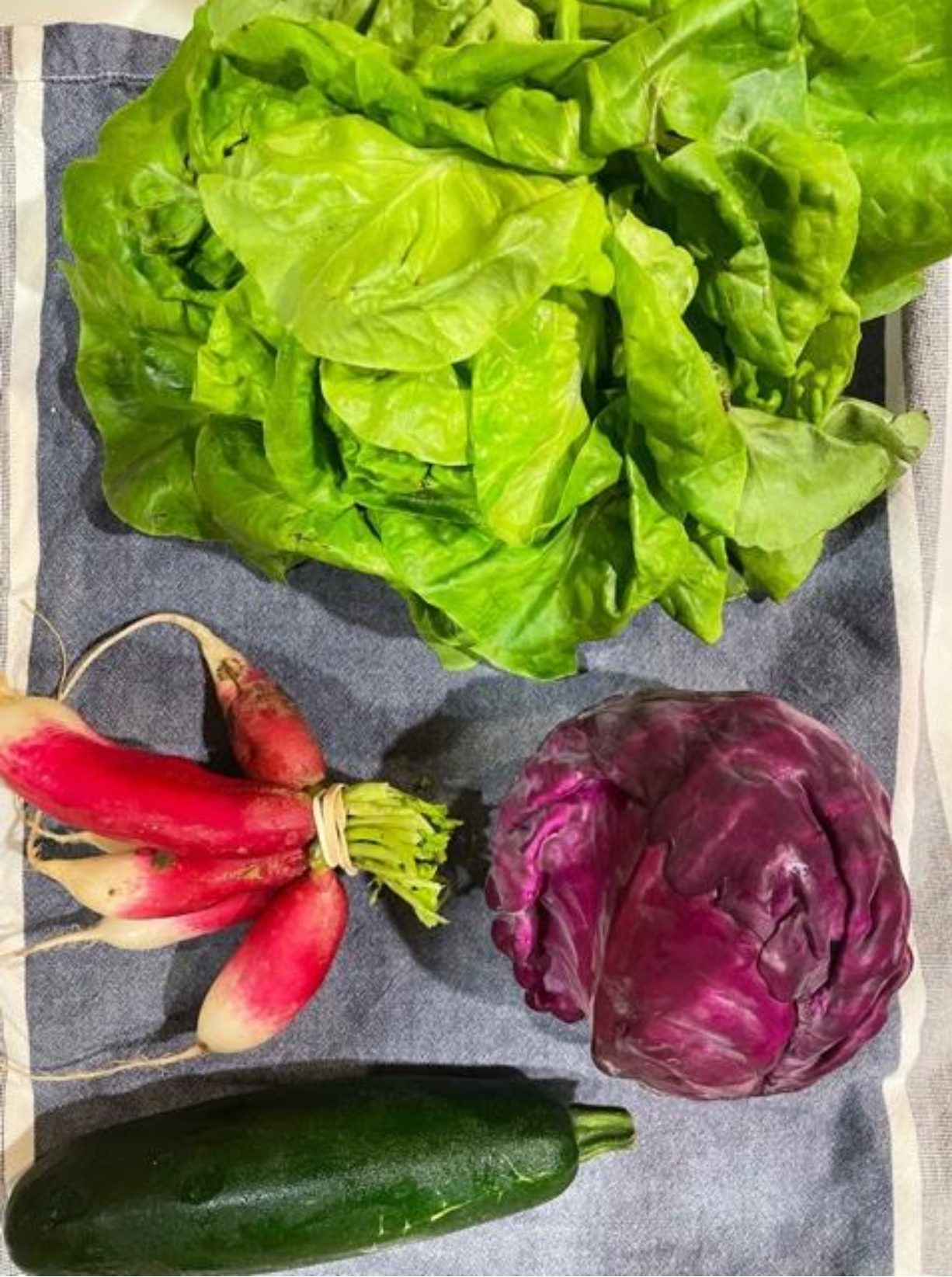From CSA member Salome Blignaut.
From Persiana - Recipes from the Middle East & beyond by Sabrina Ghayour
Featured CSA veggies: butternut squash, fresh herbs
Notes on the cookbook: Persiana’s strength is bringing out incredible flavor from simple and fast preparations. It’s my go-to cookbook for low-pressure and yet impressive meals to serve at gatherings or holidays. I wanted to share this butternut squash recipe that we’ve paired with more than one lamb recipe from the same book for fantastic Thanksgiving and Christmas meals.
BUTTERNUT SQUASH WITH PISTACHIO, PESTO, FETA & POMEGRANATE SEEDS
“Middle Eastern people often perceive butternut squash as bland. Taking inspiration from an Asian pesto- and-squash dish made by my friend, the chef Tony Singh, I came up with my ownPersian pistachio pesto, adding salty crumbled feta cheese and a handful of vibrant pomegranate seeds for a burst of flavor. The result? It has become one of my most popular supper club dishes of all time and has proven itself to be the dish that converts those who were formerly not the greatest of squash fans.”
SERVES 2 AS A MAIN COURSE OR 4 AS A SIDE DISH
INGREDIENTS
1 large butternut squash, quartered lengthways and deseeded 4 tbsp olive oil
sea salt
freshly ground black pepper
5 1/4 oz (150g) feta cheese
3 1/2 oz (100g) pomegranate seeds
For the pesto
3 1/2 oz (100g) shelled pistachios
24oz (70g) Parmesan or Grana Padano cheese, chopped into rough chunks olive oil
1 small bunch of cilantro, leaves picked
1 small bunch of parsley, leaves picked
1 sm bunch of dill, leaves picked3 tbsp chili oil
juice of 1 lemon
In a food processor, blitz the pistachios and cheese together, adding a generous amount of olive oil to slacken the mixture. Put all the herbs into the food processor with a little more olive oil, as well as the chili oil and lemon juice, and blitz again, then add some crushed sea salt and give the mixture one last whizz. Taste the pesto, ensuring it has enough salt and acidity, then allow it to rest in the refrigerator until you need it.
Preheat the oven to 400°F/200°C. Once the oven is hot, rub each wedge of butternut squash with the oil, season generously with sea salt and black pepper, and place it.on a baking sheet lined with parchment paper. Roast the squash for about 45-50 minutes, or just until the edges have begun to char slightly. You want to blacken the edges a little--this gives them a nice chewy texture. To check the squash to see if it is properly cooked, insert a knife into the flesh-if it slides clean through, the squash is ready. If you feel resistance, return the squash to the oven for a few more minutes.
Serve each wedge of butternut squash on a plate, drizzled generously with the vibrant green pesto. Crumble the feta cheese on top and scatter over the pomegranate seeds to finish.










